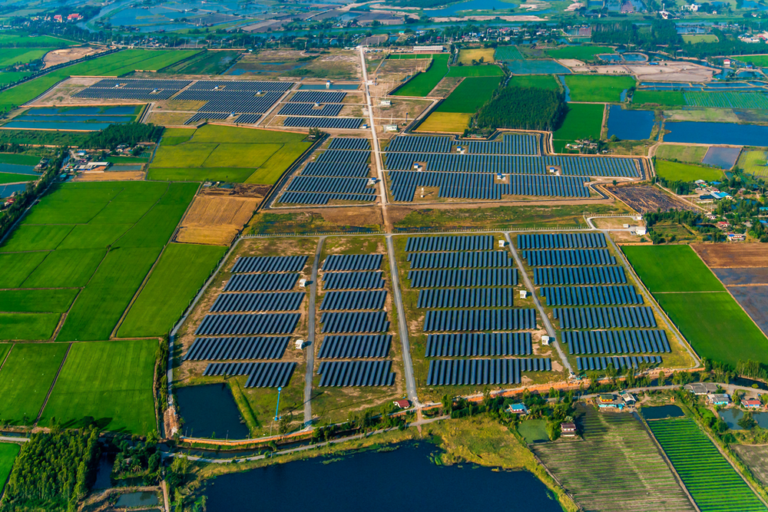solargardens
March 21, 2023
The growth of community solar in America is expected to be significant in the coming years with more and more states adopting policies and programs to support its growth. According to a report by the National Renewable Energy Laboratory (NREL), community solar installations could reach 32 GW by 2030, up from less than 2 GW in 2018. This would represent a significant portion of the country’s overall solar capacity, which is projected to reach 500 GW by 2030.

The use of solar power has been growing steadily in the United States, with more homeowners and businesses turning to renewable energy sources to power their homes and operations. However, not everyone has the means or ability to install solar panels on their own property. Community solar, also known as shared solar or solar gardens, provides an innovative solution to this problem, allowing individuals to share the benefits of solar energy without having to install solar panels on their own property.
Community solar is a model where a group of individuals or businesses collectively subscribe to a solar project, typically located on a nearby property, and receive credits on their utility bills for the energy produced by their share of the solar production. This allows individuals who cannot install solar panels on their own property, such as renters or those with shaded roofs, to still access the benefits of solar energy. Click here to begin your community solar enrollment with Solar Gardens.
Several factors are contributing to the growth of community solar, including:
One of the primary growth contributions to community solar is the increasing demand for renewable energy. As the world continues to move towards a more sustainable future, more individuals and organizations are seeking to reduce their carbon footprint and embrace clean energy. Community solar offers an excellent opportunity for individuals who cannot install solar panels on their property due to physical, financial, or regulatory barriers to participate in clean energy production. Additionally, community solar allows organizations to achieve their sustainability goals by reducing their dependence on fossil fuels and supporting local renewable energy projects.
Another growth contribution to community solar is the declining cost of solar technology. Over the past decade, the cost of solar technology has dropped significantly, making it more affordable for communities to invest in renewable energy projects. This cost reduction has made community solar more accessible to individuals and organizations, as well as developers who are seeking to build new projects. Furthermore, as solar technology continues to improve, community solar projects are becoming more efficient and cost-effective, providing even greater benefits to participating communities.
Government policies and incentives are also contributing to the growth of community solar. Many local and state governments have implemented policies and programs to encourage the development of community solar projects. These policies include incentives such as tax credits, rebates, and grants, as well as regulatory frameworks that support the growth of shared solar gardens. These policies are not only promoting the development of new community solar projects but also supporting the expansion of existing ones, allowing more individuals and organizations to participate in clean energy production. Currently, 21 states and the District of Columbia have policies supporting community solar, and more are expected to follow.
Despite the growth of community solar, there are still challenges to its adoption, such as high upfront costs for developers and the need for supportive policies and regulations. However, innovative financing models, such as community solar subscriptions, and the expansion of virtual net metering programs are helping to address some of these challenges.
Community solar provides access to solar energy for those who cannot install solar panels on their own property, promotes energy independence, and supports the growth of the renewable energy sector. Overall, as the demand for solar energy continues to grow, the future looks bright for community solar in America, and it is expected to continue to play an important role in the country’s transition to a more sustainable and renewable energy future.
Explore how Solar Energy Expands to Low-Income Communities. We cover the rise of community solar projects, the impact of government...
A solar garden is a centralized solar (PV) installation that generates and supplies clean energy to the connected power grid....
Community Solar is a renewable energy program that allows all residents to access local solar energy without installing rooftop solar...
Join Community Solar with Solar Gardens to redeem this offer
- Enter your contact info to receive your promo code -